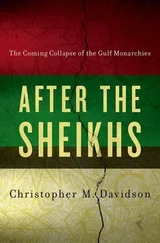“There was, God knows, no break with convention”; “the least mad of the formulas that came to hand”— both Kazin and Baldwin saw their bewildered peers breaking out of one ideological prison only to find themselves in another. Theirs was a generation teetering on a new kind of brink— full of optimism about the possibility of change, they were unsuspecting accomplices in the authorship of more insidious forms of control.
I first learned about Reich’s orgone energy accumulator in 1993 when I visited Summerhill, the “free” school in Suffolk, England, founded in 1921 by A. S. Neill . I was an anthropology student at Cambridge University and, when I asked whether I could stay for a while as a participant-observer, I was offered a large tepee as a place to sleep. I liked the idea of living in it: a wigwam seemed a suitable home for a backyard anthropologist. However, everything at Summerhill— where lessons are voluntary and the pupils invent their own laws— is put to a vote, and the children decided they wanted to keep the tepee for themselves. So for that summer I lived in a bedand-breakfast in Leiston. All the other guests worked for the nuclear power station Sizewell B: every piece of crockery and all the towels and cutlery were stamped with the nuclear power station’s logo. The owner of the B&B had been given a free pullover after a random Geiger counter inspection had determined that his own, hung out on the clothesline, harbored dangerously elevated levels of radiation.
While I was there I read the lengthy correspondence between Neill and Reich that offered an articulate commentary on the rise of fascism and on the idea of sexual liberation as a coherent strategy to oppose totalitarianism, a philosophy that held over awkwardly and controversially into the era of the cold war. I also discovered that an orgone energy accumulator had once been used at the school, though it had recently been dismantled because the nearby nuclear power station was thought to have reversed its positive effects. Reich came to believe that atomic energy, the fear of which clouded the American psyche in the 1950s, aggravated the orgone energy that he had discovered, which explained, in his view, why not everyone who was prescribed his box could be cured.
A. S. Neill met Reich in Oslo in 1936 and soon afterward became his analysand, fitting in a dozen sessions with him on a return trip. Reich had by that time been expelled from the International Psychoanalytic Association (he had once been considered Freud’s heir apparent, but his attempts to reconcile psychoanalysis and Marxism ended up alienating practitioners of both), and pioneered a new form of analysis called “vegetotherapy,” a repudiation of the talking cure. 10Reich’s third wife, Ilse, described it as “doing away with the psychoanalytic taboo of never touching a patient,” and replacing it with “a physical attack by the therapist.” 11Reich would relax the patient’s taut muscles with deep breathing exercises and painful massage, until he or she broke down in involuntary convulsions, which Reich called the “orgasm reflex.”
Though his school had already been running for fifteen years, Neill found in Reich’s work its ideological justification, and he once referred to himself as Reich’s “John the Baptist.” His many books are littered with references to Reich’s concepts of “character armor” and “ self-regulation.” For his part Reich saw Neill’s project as a practical test of his ideas, and he sent his own son, Peter, to Summerhill for a while. He once threatened to give up his research and come and teach at the school, but Neill laughed and declined his offer, saying that Reich would frighten the children. Neill did, however, ask him to be the legal guardian of his daughter, Zoë. Reich invited Neill to start an orgonomic infant research center at his research institute in Maine and encouraged him to replace his Summerhill staff with people schooled in Reichian practice. Neill rejected both suggestions, but continued to read aloud from Reich’s books at staff meetings.
Reich and Neill shared a belief in the redemptive power of unconstricted development in children. For Reich this had an urgent political significance: he thought that only when children were raised free would it be possible to lay the foundations of a utopia. Neill thought that a radical reform of the education system was an essential preliminary to the creation of a better world. Both men believed that children were inherently good: it was an authoritarian, sexually repressive upbringing that corrupted them. Summerhill was designed to offer children a sanctuary from the moral contamination of the world, where they could live out their desires without the fear of punishment and play without the pressure of indoctrination: “We set out to make a school in which we would allow children freedom to be themselves,” Neill wrote. “In order to do this we had to renounce all discipline, all direction, all suggestion, all moral training, all religious instruction.” 12The school’s motto continues to be “Giving children back their childhood.”
By the summer of 1944, Neill had begun to practice Reich’s analytic technique on his pupils at Summerhill. “I have given up teaching and am doing only veg.-ther. analysis,” he wrote to Reich. “The more I see the results with adolescents the more I consider that bloody man Reich a great man . . . Marvelous how patients weep so easily when lying on their backs. Some do so in the first hour. Why?” 13One former student remembers being instructed to lie down and “breathe deeply, as though you’re having sexual intercourse,” while Neill prodded her stomach (she was too young to know what sex was, so she just panted). 14“The repressed ones have stomachs like wooden boards,” Neill wrote to Reich of his pupils’ resistance, “but children begin to loosen up very quickly, and at once begin to be hateful and savage.” 15
The philosopher Bertrand Russell, like Neill, preached the benefits of an unconstrained childhood and campaigned for new sexual mores. Neill said that Russell’s On Education (1926) was the only book on the topic he’d read without uttering an expletive. Russell spent a week at Summerhill in 1927 before opening a school of his own, Beacon Hill, based on similar principles. He was soon disillusioned, however, and left the school after five years. The children in his care, Russell wrote, were “sinister,” “cruel,” “destructive.” The effect of giving them their freedom “was to establish a reign of terror, in which the strong kept the weak trembling and miserable.” 16Russell’s own children, for whom Beacon Hill was partly created (it had only twelve pupils), were, like their father, traumatized by their time at the school. “I learned to get along inside a shell,” Kate Russell said, “fending off physical and emotional assaults from others and trusting nobody.” 17But for Neill, the monstrous behavior of children was a stage along the path to liberation: if they were “hateful and savage” it was only because they were sloughing off the final carapace of their repressions.
The accumulator that Reich gave Neill arrived in England on the Queen Elizabeth in April 1947, along with a smaller “shooter” box with a protruding funnel for directing orgone energy rays at infections and wounds. “I sit in the Accumulator every night reading,” Neill wrote appreciatively, “ re-reading the Function of the O. while I sit in the box.” 18Neill soon became convinced of the machine’s effectiveness: “We used the small Accu on a girl of 15 with a boil on her leg,” he said. “It cleared up in three days, and we are to have her in the big box next term.” The effects apparently defied scientific explanation: “When Lucy had a new lump on her face under the operation scar, she applied the small Accu and it went in a fortnight,” Neill marveled. 19He bombarded Reich with questions: Was it safe to keep an accumulator in one’s bedroom? Did you have to be naked inside it? Would it be as effective in the damp English climate? How long could his daughter safely sit in the box?
Читать дальше












